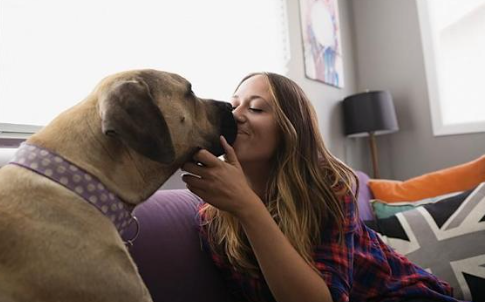Bacteria and Pathogens in a Dog’s Mouth
A dog’s mouth is no cleaner than a human’s. In fact, dogs often explore the world with their mouths, licking surfaces, eating things off the ground, and even grooming themselves in areas that contain bacteria. As a result, their saliva can harbor microorganisms such as Escherichia coli (E. coli), Salmonella, and Campylobacter, which can cause serious gastrointestinal infections if they come into contact with the mouth, eyes, or open skin wounds.
Diseases That Can Be Transmitted

One of the most serious dangers of allowing a dog to lick you is the transmission of zoonotic diseases, which are those that can be transmitted from animals to humans. Some of the most common include:
Capnocytophaga canimorsus: A bacteria present in the mouths of dogs that, although rare, can cause serious infections in people with weakened immune systems.
Ringworm (Dermatophytosis): Can be transmitted through contact with the dog’s saliva or fur.
Staph infections: Such as methicillin-resistant Staphylococcus aureus (MRSA), which can cause skin infections and respiratory problems.
Parasites: Such as roundworms and giardia, which can be transmitted if the dog has ingested contaminated fecal matter.
How to Protect Your Health?

While it’s not necessary to avoid all contact with your pet, it’s a good idea to take precautions to minimize risks:
Don’t let your dog lick your face, especially near the mouth, nose, and eyes.
Wash your hands after playing with your pet, especially before eating.
Keep your dog’s vaccinations and deworming up to date.
If you have open wounds, avoid contact with your dog’s saliva to prevent infection.
Although we love our dogs, it’s important to prioritize their health and well-being, avoiding behaviors that could put us at risk.

